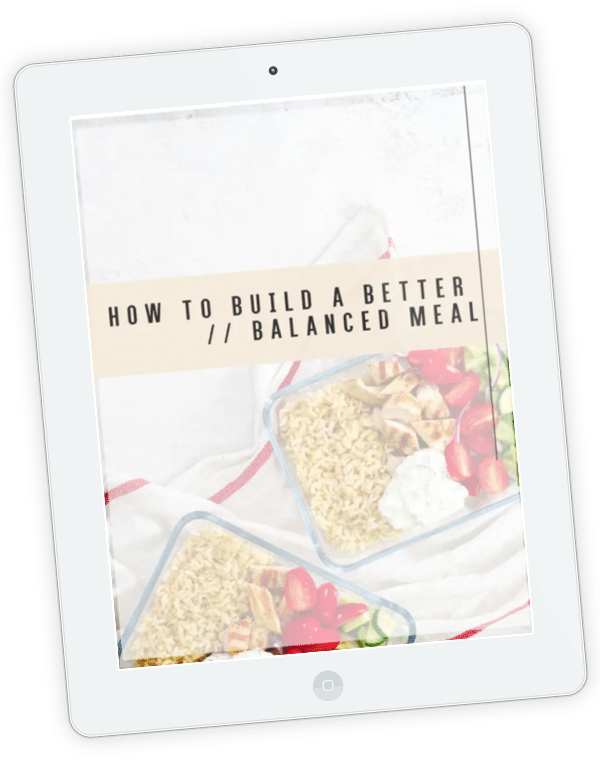How to Lose Weight Without Dieting: 22 Small Changes for Weight Loss in 2022
It’s the first week of the new year, which means it’s “new year new me” season. But as friends, family, and coworkers compare diets, you may be wondering how to lose weight without dieting. Is it possible? Absolutely!
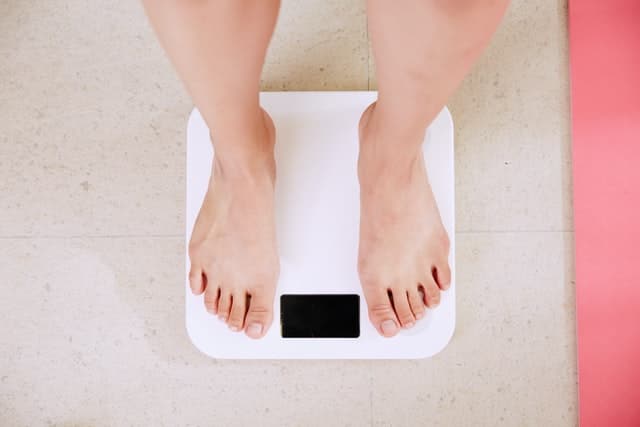
A little weight loss 101: The fundamental principle of weight manipulation is calorie control. (Although there is more to the simple equation of “calories in versus calories out,” I won’t belabor that here.) But that doesn’t mean you have to go to extreme lengths to consume fewer calories than you burn. In fact, you don’t have to obsess over calories, period.
22 small changes for weight loss in 2022
There are numerous small changes you can make to your diet that can help you control satiety and hunger, and therefore your overall calorie intake—no calorie counting or starvation necessary. And better yet, these sustainable habits can help you keep the weight off. Here are 22, dietitian-backed ways to lose weight without dieting.
Chug a glass of H2O before your coffee
A population study from 2016 found that adults who were inadequately hydrated had higher BMI’s and a greater risk of being obese than their hydrated peers. Although the exact mechanisms as to how hydration status impacts weight management remain unclear, we do know that good ol’ H20 makes up about 60% of the body and facilitates almost every physiological process throughout it. So, drinking up probably can’t hurt your weight management efforts!
Why chug a glass before your morning coffee? Well, for one, it gets your day started with hydration in mind. And it’s an easy hydration habit to remember and implement—before you know it, you’ll associate turning your coffee pot on with drinking water. Say it with me, water before coffee, water before coffee, water before coffee! Oh, and one small study found that drinking 16 ounces of water before breakfast significantly reduced energy intake at breakfast in overweight adults.
Swap juices with smoothies
Juicing fruit separates the juice from the pulp, removing the fiber and leaving you with straight sugar. Without fiber, your body more rapidly absorbs that sugar into the bloodstream, and the fruit loses its satiating power. Juices do retain many of the vitamins and minerals from the fruit, but it’s still best to choose fruit in whole or smoothie form rather than juice form when possible.
Oh, and speaking of juices, don’t get me started on celery juice… it does NOT do any of the magical, disease-fighting, belly-fat-blasting things you’ve read about all over social media.
Need some filling, high-fiber smoothie recipes?! Check out my new book, The Plant-Forward Solution: Reboot Your Diet, Lose Weight & Build Lifelong Health by Eating More Plants & Less Meat, available now! It includes a “Build a Better Balanced Smoothie” section with my secret smoothie formula and 6 delicious, high-fiber smoothie recipes!
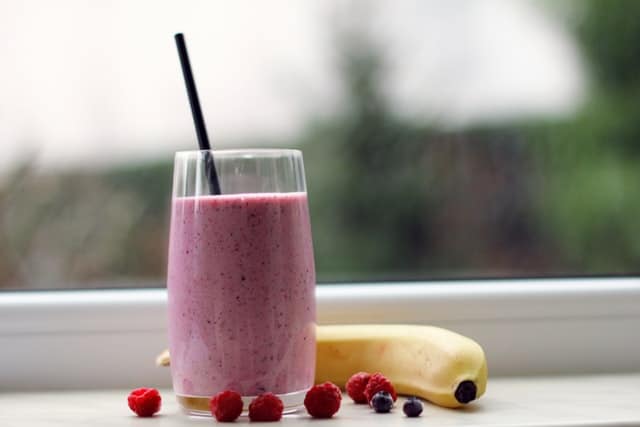
Have a meatless lunch or dinner daily
The plant-forward movement isn’t stopping anytime soon, and for good reason. Plant and animal proteins each offer unique nutritional benefits, but there’s one big thing plant proteins have to offer that animal proteins completely lack: fiber.
Almost all plant proteins provide some amount of fiber, but those richest in fiber include: beans, chickpeas, lentils, quinoa (and other “ancient”/whole grains), tempeh, and nuts.
If you’re not accustomed to incorporating plant-based foods in the diet, start slow. Try participating in meatless Mondays or focusing on incorporating one plant-based protein into each day. You can also try subbing out an ounce or two of meat/poultry in your dish for about a quarter-cup of cooked beans, chickpeas, or lentils. For example, make a burrito bowl with two to three ounces cooked chicken breast and a heaping quarter-cup of black beans.
Add 1–2 Tbsp small seeds to your day
Try adding a tablespoon or two of seeds, like chia, flax, and/or hemp, to your day. These seeds may be small in size but they’re mighty in nutritional power, providing you with the satiating duo that is fiber and protein. And since they’re relatively tasteless, it’s easy to incorporate them into a variety of your meals and/or snacks. You can:
- Blend ground flaxseed into your smoothie
- Add ground flaxseed to your baked goods
- Sprinkle hemp seeds on your avocado toast
- Use hemp seeds in a homemade pesto
- Make chia pudding out of chia seeds
- Mix flax and/or chia seeds into your oatmeal
For more fiber tips, check out this article on 10 Easy Ways to Sneak More Fiber into Your Diet!
Add ~1/2 cup beans to a meal most days
Making pulses (beans, lentils, etc.) a part of your daily routine will not only improve your overall health but may also be one of the most effective strategies for weight management. One study found that this simple strategy was as effective at slimming waistlines as following a calorie-restricted diet.
So, make it a habit to get in at least a half-cup (or one serving) most days of the week. You can enjoy them all in one meal or throughout the day—say a scoop at lunch and another with dinner. You can also consume them in pasta form—beyond chickpea pasta, you can now buy lentil penne, black bean spaghetti, edamame fettuccine, mung bean rotini, and more!
Eat to 80% full
For centuries, the Okinawans—one of the Blue Zones aka regions that are home to some of the world’s longest-living and healthiest people—have been following this eating practice, which they call “Hara Hachi Bu”. Basically, eat until you’re just satisfied and no longer hungry, but not stuffed like a Thanksgiving turkey or even completely full. To put this into practice, try to…
Eat slowly & without distraction
They say it takes about 20 minutes for the stomach’s “I’m feeling full” signals to register in the brain. So, instead of shoveling down food like you’re in Nathan’s hot dog eating competition, slow down and savor every bite.
And while you’re at it, turn of the TV, put away your phone, and step away from that laptop before eating, as these distractions can distract us from our fullness cues. And research indicates that eating a meal while distracted tends to make people eat more not only at that meal, but later on as well.
Make coffee at home
We all love a Starbucks Vanilla Latte or a Caffe Mocha, but did you know that many of these Starbucks classics contain over 30 grams of sugar (for a grande-sized cup)? That’s as much sugar as a can of soda!
Instead, try making your coffee at home most of the time—that way, you have total control over what goes in it (and aren’t tempted by the endless flavor syrups, pastries, and more). It might be time to upgrade your coffee machine to make making coffee at home a little more exciting.
This Ninja DualBrew Pro was a bit of an investment, but it’s one of my best investments for the kitchen as not only does it brew a pot of coffee, but it also allows you to make iced coffee, use k-cups when you’re in a pinch, and steam/froth milk!
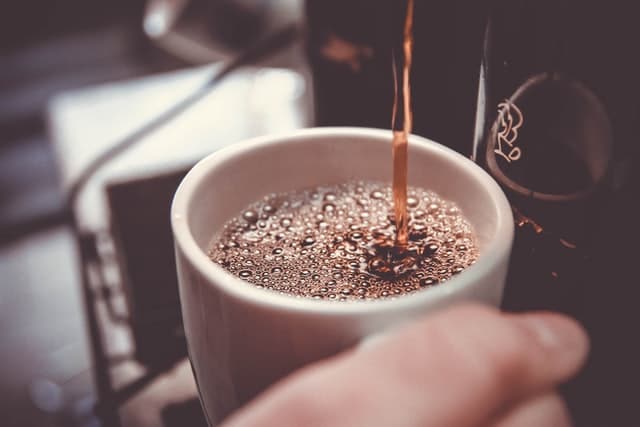
Nosh on Nuts
Nuts were once considered high-fat villains, the consumption of which would be a sure-fire recipe for weight gain. Nuts are indeed rich in fat and therefore calorically dense, so the logic makes sense at face value. But nuts have been shown to be incredibly satiating, thanks in large part to their plant protein and fiber content. Numerous studies have found that consumption of nuts can suppress hunger and decrease subsequent food intake, therefore offsetting some of their calories.
Plus, studies have estimated that up to 20 percent of the calories in nuts aren’t even absorbed because of how the fat in them is stored in their cell walls, which don’t easily break down during digestion. You can rest assured; the weight of the evidence does not indicate that nuts pose a threat to your waistline. In fact, noshing on them regularly may make you less likely to gain weight.
Think slow carb, not low carb
Carbs are friend, not foe! To be clear, that doesn’t mean you should treat all carbohydrate-rich food sources the same. Common sense tells us that oats and frosted flakes—two carbohydrate-rich breakfast foods—are not equal. But by focusing on carb quality, you can stress less over carb quantity. The quality, carbohydrate-rich foods you want to choose most of the time (like oats) have little to no added sugar and retain their fiber (and may even be a good source of protein), which helps slow digestion and the release of glucose into the bloodstream—hence the name “slow carbs.”
On the other hand, quick carb sources (like many breakfast cereals) lack fiber and often are rich in added sugar, causing glucose to be rapidly absorbed into the bloodstream and giving you a quick—but not sustained—burst of energy. Eating for balanced blood sugar is a helpful strategy for anyone looking to lose weight and/or improve/maintain overall health, not just individuals with diabetes. Choosing slow carbs over quick carbs most of the time—but not necessarily all of the time—can help you do just that.
Interested in learning how to incorporate carbs into meals for satiety, weight loss, and blood sugar balance? Check out my new book The Plant-Forward Solution: Reboot Your Diet, Lose Weight & Build Lifelong Health by Eating More Plants & Less Meat, available now!
Limit added sugars instead of swearing off them forever
Telling yourself you can’t have something just makes you want it more, right?! We always want the things we can’t have, and if you view certain foods, like cookies, cakes, donuts, etc., as “bad” foods that you shouldn’t be eating, well you’ll end up craving them even more. But if you take the guilt – and the halo – off of foods and give yourself permission to enjoy them, the indulging becomes less special, in a good way. There’s no longer this sense of restriction or scarcity and you’ll probably find that your cravings for these foods decrease and become way less intense.
Unsurprisingly, a small study found that those with a weight-loss goal who associated chocolate cake with guilt were less successful at losing weight over a 3-month period compared to those who associated chocolate cake with celebration.
Prioritize protein at breakfast
Research suggests that getting a nice dose of protein in the morning with breakfast may help control hunger hormones to reduce appetite and lower calorie intake throughout the rest of the day, and therefore help with weight loss.
Some of my favorite, protein-packed breakfasts include:
- Egg muffins with chopped veggies, like bell pepper and spinach
- Toasted whole grain or sprouted bread topped with avocado and an egg
- Sweet Potato Crust Quiche with Spinach & Feta
- Smoothie with almond milk, fruit, veggies (usually spinach or frozen cauliflower rice), nut butter, seeds (like ground flaxseed or hemp seeds), and a little protein powder
- Overnight oats with rolled oats, Greek yogurt (or dairy-free yogurt), almond milk, chia seeds, frozen wild blueberries, lemon juice, and almond butter
- Greek yogurt topped with berries, nut butter, hemp seeds, and a drizzle of honey
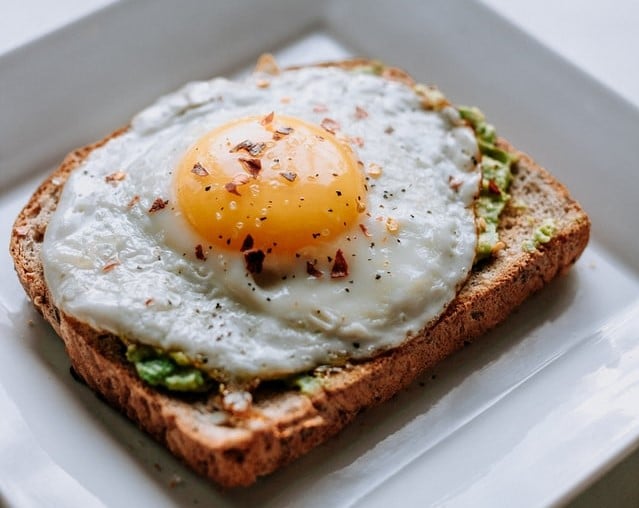
Incorporate oats into your day
Oats are well-known for being rich in the soluble fiber beta-glucan, which evidence suggests has a positive effect on satiety. As a soluble fiber, it absorbs water to form a gel that slows stomach emptying and digestion, keeping you fuller for longer, and functions as a prebiotic, feeding your good gut bacteria and enabling them to produce appetite-hormone-regulating short-chain fatty acids as a byproduct. Not only that, but prepared oats make for the perfect canvas for a variety of other satiating, fiber-rich foods—think berries, seeds, nut butters, and more!
You can enjoy oats for breakfast in a variety of ways: overnight oats, baked oatmeal, oat pancakes, Banana Bread Cauliflower Oatmeal, or my favorite Healthy Banana Oatmeal Breakfast Cookies. For a less conventional ways of getting oats into your diet, try using them as a breadcrumb replacement in meatballs or your favorite veggie burger recipe.
Swap white pastas with whole wheat & legumes ones
Breathe a deep sigh of relief—you DO NOT have to eliminate pasta from the diet in order to lose weight. Phew! However, I do recommend you swap most of the white, refined kind with whole wheat and legume-based pastas, which boast at least double the fiber and protein of their white wheat counterpart.
Beyond chickpea pasta, you can now buy lentil penne, black bean spaghetti, edamame fettuccine, mung bean rotini, and more. There’s even chickpea pasta-based boxed mac and cheese available (like this Banza Chickpea Mac & Cheese)!
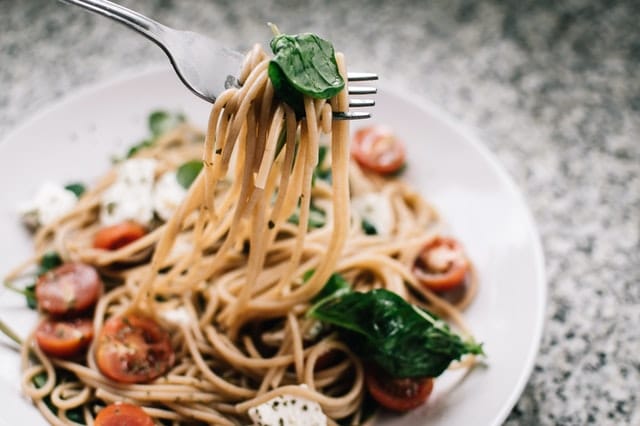
Don’t skip lunch
You may think you’re saving yourself calories on those days when “you’re just too busy to eat lunch” but trust me when I say, you’re probably not. What usually ends up happening is that you end up subconsciously snacking on nutrient-void snacks throughout the afternoon (a handful of M&M’s off Bob’s desk, a fist full of your kid’s goldfish—you get the picture). Not only can these snacks add up and leave you hungry again soon after, but come dinner time, you’ve now convinced yourself you can eat as much as you want because you saved yourself so many calories from lunch! You ultimately end up making up for those “lost lunch calories” and then some.
Do yourself a favor and make it a priority to not skip lunch. Serve yourself a nourishing, balanced meal made up of non-starchy veggies, lean protein, “slow” carbs, and healthy fats.
Cook once, eat (at least) twice
Anyone who says making dinner isn’t a chore is lying! The chopping, cooking, waiting, cleaning—it’s no wonder many of us resort to takeout more often than we’d like to admit. So, whenever you make a nourishing meal, be sure to double or triple the ingredients (if need be) to have enough servings for dinner the next day. That way, you’re less tempted to dial 1-800-DOMINOS when you open the fridge to emptiness at 7 PM after a long, hard day of work.
Need help finding some batch/bulk recipes? Search for:
- Casseroles
- Instant pot or slow cooker recipes
- Freezer-friendly meals
- Sheetpan meals
- Bowls (burrito bowls, buddha bowls, etc.)
Don’t Fear Fat
Contrary to popular belief, fat does not actually make you fat. Although you do want to limit intake of saturated fats, your meals should celebrate the fats that have too long gotten a bad rap. I’m talking unsaturated fats found in foods like avocado, olive oil, nuts, and more. In addition to promoting heart health and helping you absorb the fat-soluble vitamins (vitamins A, D, E & K) on your plate, these healthy fats can also help you feel full by slowing stomach emptying and triggering the release of fullness hormones. They can also help increase your vegetable intake by spicing up some lackluster veggies. Healthy fat sources like chia seeds and avocado hold even more fill-you-up power because of their high content of fiber as well.
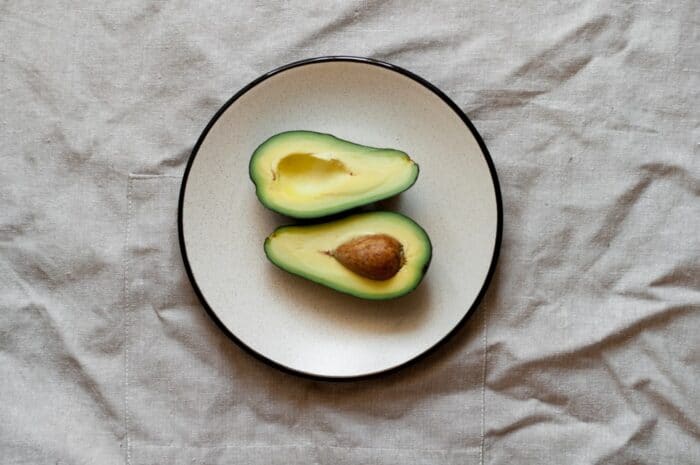
Stock your freezer with stir-fry veggie blends & riced veggies
Frozen food has gotten a bad rap over the years for being highly processed and unhealthy—a largely undeserved reputation, especially when it comes to frozen produce. Freezing is one of the easiest and most effective food preservation methods. Frozen produce is often picked at peak ripeness and frozen within a few hours to lock in the nutrient content; however, it may lose some nutrients during the blanching and freezing process. Fresh produce is often picked before it’s fully ripe, giving it less time to develop a full range of nutrients. It’s also more likely to sustain some nutrient loss during transport and storage. That said, studies have found that frozen fruits and vegetables are—for the most part—comparable nutritionally to their fresh counterparts.
Frozen, pre-chopped veggie blends and riced veggies are so convenient and cost-effective—having a stock of them in your freezer is a surefire way to guarantee more vegetable intake. One of my favorite ways to use riced veggies is to make a fried rice with have brown rice and half frozen cauliflower rice!
Cut down on the booze
There’s nothing quite like that first sip of wine after a long day, and I’m not here to take that bliss from you. But let’s face it, alcohol is empty calories, meaning those calories provide little to no nutritional value. Plus, alcohol lowers your inhibitions and leads to poor decision-making when it comes to food quality and quantity (no surprise there).
But again, you don’t have to cut alcohol completely. Instead, give the 3-2-1 rule a try. Limit drinking to up to 3 days per week, up to 2 drinks in one day but try to keep it at just 1. Basically, 3 to 5 drinks per week is a reasonable limit but try not to have them all in one day.
Make half your plate non-starchy veggies
Non-starchy vegetables, like leafy greens, peppers, tomatoes, broccoli, cauliflower, etc., provide you with fiber and add volume and phytonutrients to your meals without adding many calories, giving you the most bang for your calorie buck. Aim to fill half your plate with them or strive for at least five servings a day (1 serving = ~1 cup raw leafy greens or ½ cup everything else).
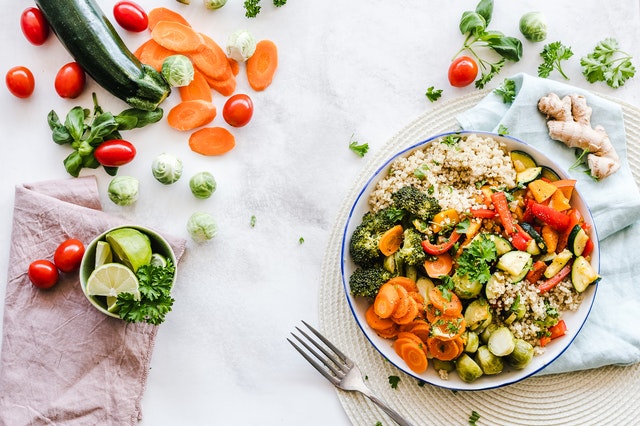
Keep fresh fruit on your counter
Ever heard of the “see-food” diet? You know, the diet where you see food and you eat it? Although it’s talked about jokingly, there is truth to the fact that you’re more likely to snack on whatever is most visible to you.
When researchers inventoried and catalogued hundreds of household kitchens in Syracuse, New York, they found that those who kept fruit on the counter (as opposed to foods like candy, cereal, and soda) were more likey to have a lower BMI.
Try to finish eating by ~8 pm
Let me preface this one by saying this has nothing to do with the whole “carbs before bed are more likely to be stored as fat” myth. (If you’re curious to learn more about this myth and other carb myths, I bust several of them in this article). You do not have to restrict yourself after 8 pm out of fear that it will wreak more havoc on your waistline than food eaten before 8 pm.
It’s simply a good habit to avoid nighttime snacking when you can, as it can certainly add up and is likely a sign that you’re not nourishing yourself well during the day. If you’re constantly hungry after dinner and snacking up until bedtime, it’s time to re-evaluate what you’re eating at dinner, and before then, too. Maybe you need a little help with structuring balanced meals.
Bottom Line: How to lose weight without dieting
As you can see, there are numerous small changes for weight loss you can make in the new year that don’t involve a crash diet.
No need to take them all on at once—start off with a few favorites and then add a couple more week by week.
Let me know if you plan on trying any of the above in the comments section below!



